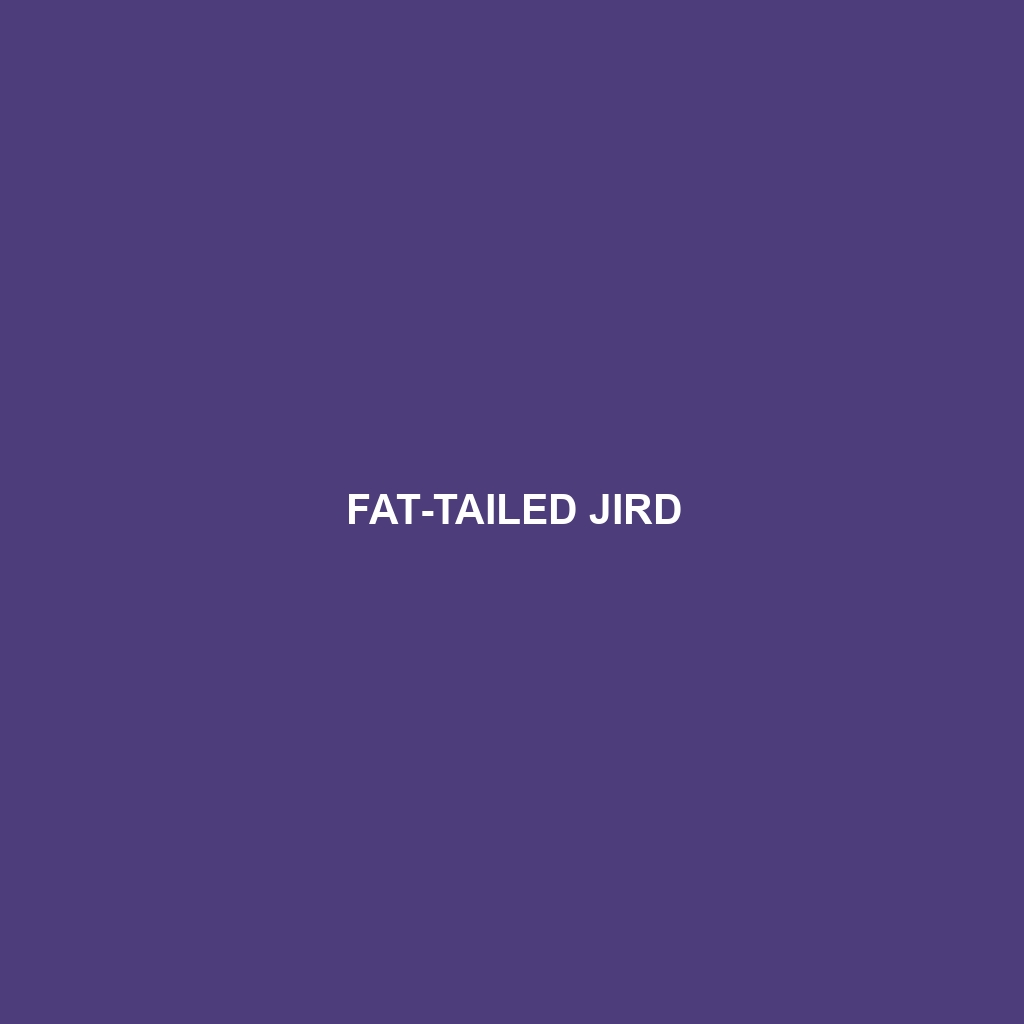Fat-tailed Jird (Common Name)
Scientific Name: Meriones crassus
Habitat
The Fat-tailed Jird is primarily found in the arid and semi-arid regions of Central Asia. Its geographic range includes countries like Kazakhstan, Uzbekistan, and southern parts of Mongolia. This species typically inhabits sandy or gravelly deserts, as well as grasslands that provide adequate cover and nesting sites. They thrive in environments with minimal vegetation, enabling them to burrow extensively.
Physical Characteristics
The Fat-tailed Jird is a small to medium-sized rodent, measuring approximately 10 to 12 inches in length, including its long, slender tail. Its fur is typically sandy brown or gray, providing excellent camouflage against its desert surroundings. A distinguishing feature of this species is its notably fat, bushy tail, which serves as a fat storage organ. The jird also has large ears and strong hind legs, adapted for their burrowing lifestyle.
Behavior
Fat-tailed Jirds are predominantly nocturnal, being most active during the cooler evening hours. They exhibit typical burrowing behavior, creating complex underground tunnel systems that protect them from predators and harsh environmental conditions. Socially, these jirds can be found living in small colonies, where they communicate using a variety of vocalizations and body language. Their ability to adapt their behavior to their environment makes them intriguing subjects of study for ethologists.
Diet
The diet of the Fat-tailed Jird primarily consists of seeds, grains, and various plant materials. They are known to forage extensively during the night, gathering food to store in their burrows for later consumption. This feeding behavior not only ensures their survival during food-scarce periods but also plays a crucial role in seed dispersal in their ecosystem.
Reproduction
The breeding season for Fat-tailed Jirds typically occurs in the spring and can continue into the summer. Females usually give birth to litters of three to six offspring after a gestation period of about 25 days. Maternal care is strong, with the mother nurturing the young until they are old enough to forage independently. Breeding pairs may exhibit strong bonds and engage in communal grooming behaviors as part of their reproductive strategy.
Conservation Status
The Fat-tailed Jird is currently listed as Least Concern according to the IUCN Red List, though habitat degradation and loss pose potential threats to their populations. Continued monitoring is essential to ensure that this species does not become vulnerable due to environmental changes.
Interesting Facts
One of the fascinating aspects of the Fat-tailed Jird is its ability to survive in harsh desert climates by obtaining moisture from the seeds it eats, reducing its need for water sources. Additionally, they have a remarkable adaptation mechanism, allowing them to enter a state of torpor during extremely hot temperatures to conserve energy.
Role in Ecosystem
The Fat-tailed Jird plays a significant role in its ecosystem by aerating the soil through its burrowing activities and contributing to plant propagation via seed dispersal. Its presence supports the food chain, serving as prey for various predators, including foxes and birds of prey. As both a consumer and prey species, the Fat-tailed Jird is integral to maintaining ecological balance in its habitat.
